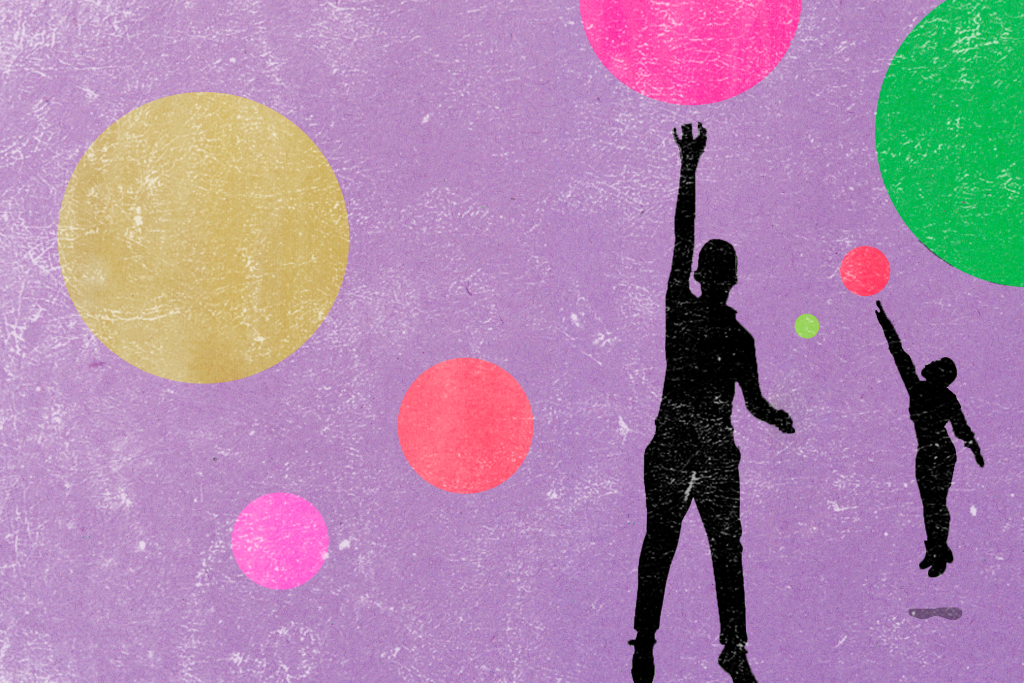Brands Need to Redefine What it Means to “Connect”
What brands can learn from how the arts and culture sector will rise from the ashes of COVID-19.
Julie Dixon is Managing Director at National Journal's Network Science Initiative and is a Long Dash alum. She is also a professional musician, songwriter, and actor, with original songs place on MTV, two albums to her credit, and appearances on stages across the DC area.
Imagine for a moment that you are the leader of a mid-sized nonprofit arts organization. Over the past three weeks, you have likely found yourself having to completely rebuild your entire business model from the ground up due to COVID-19. In-person connection—the cornerstone of everything you do—is obsolete for the foreseeable future. It requires a complete reimagination of how you engage your audiences and of how you support them in connecting not only with you, but with one another. A growing number of arts and culture organizations in the U.S. are doing just that, and brands can learn a great deal from how they are adapting and forging these crucial connections.
Even before COVID-19, many arts and culture organizations were in a precarious position. In 2018, the average museum or performing arts institution in the U.S. had just two months of working capital on hand or less. Just two weeks ago, a survey estimated that the nonprofit arts sector will lose $3.6 billion as a result of COVID-19. That could mean the permanent closure of more than 30 percent of museums nationwide—in particular, those located in smaller communities—among many other vital arts organizations.
“It’s catastrophic, if we’re looking at a timeline that does not have people back by September,” said Deb Gottesman, co-executive director of the Theatre Lab School for Dramatic Arts. “This has destroyed the mechanism by which any of us operate: human, interpersonal connection.”
Faced with this bleak reality, arts and culture organizations have acted quickly. Nearly all have jumped on the streaming video bandwagon, making their content accessible through gallery tours, recordings of performances, live streams of zoo exhibits, and more.
These efforts are primarily designed to re-create the experience of viewing their content in person and to take advantage of the glut of time we now find ourselves trying to fill with online content consumption. According to Comscore, in-home data usage was up 18 percent in March, likely due to an increase in streaming media consumption. In Italy, Instagram Live and Facebook Live views doubled week over week at the height of quarantining. Everyone, apparently, now has a live stream.
It seems like a natural solution, then, for arts and culture organizations trying to keep their audiences engaged while they can’t physically experience them. People are clearly spending more time consuming video content, and arts and culture organizations have troves of compelling content they can share.
It’s catastrophic, if we’re looking at a timeline that does not have people back by September. This has destroyed the mechanism by which any of us operate: human, interpersonal connection.
However, early reviews have been… lackluster, to say the least.
“Why, I ask myself, do I find most of the virtual museum tours available online so disheartening?” asked a columnist in ArtNet. “I roam the halls of the virtual Uffizi or the virtual Met in the Google Art Project and find it good for a few clicks worth of novelty and not much more.”
A theater critic echoed this sentiment: “Glowing at me through my screen, they felt flattened and far away—and, oh, how they made me wish I were in the room to sense all of their dimensions.”
There are several reasons why these experiences haven’t been as fulfilling for audiences—or as effective an engagement strategy—as arts and culture organizations would like.
First, they take a medium that is designed for one platform (in-person) and attempt to replicate that experience on a completely different platform without fundamentally adapting the content. “Theater often dies on screen because you need the breath of your fellow audience,” noted a theater journalist. “You need to see it with your own eyes, the moment is important when it happens.”
Perhaps more importantly, these efforts are underpinned by a flawed understanding of what motivates audiences to engage in the first place. We assume that people are coming to our performance or to our gallery simply to consume our content. But, I would argue that the underlying motivation is not content consumption. It is connection—the feeling of a shared experience, a collective reaction. And, today, that need for connection is greater than ever before.
“We’re not starved for content if we’re plugged into social media,” said Gottesman. “We’re starved for connection. I’m watching a [streaming] concert, but no one can hear me applaud.”
Connection is not a new idea for brands. However, brands have traditionally measured connection as the relationship between the audience and the brand itself. COVID-19 is fundamentally changing this. Connection now, more than ever, means facilitating relationships not just with a brand but also among a brand’s audience.
Look no further than the recent uptick in apps that allow us to watch Netflix content in online groups as proof of our desire to have shared experiences right now. Another example is the formation of 300 Coronavirus Facebook groups, collectively serving more than a million people in the U.K. alone, as proof of our need for support and interaction.
The brands, both inside and outside of the arts and culture sector, best positioned to endure post-COVID-19 are the ones that recognize this urgent need for connection today and into the future. They are the ones providing their audiences with a platform for shared experiences, not just content to passively consume.
Here in the U.S., a handful of arts and culture organizations are leading the way, using this critical moment to experiment with new forms of engagement. They are pushing beyond the limitations of streaming video to provide their communities with real opportunities to connect, both during and after a prolonged period of isolation. Brands inside and outside of the sector can take a page from their playbooks when thinking about how to foster these connections.
1) Lead with transparency and vulnerability
Brands don’t always need to control the narrative and project coolness in a crisis. Instead, they can demonstrate leadership by stepping back from the spotlight and redefining themselves as facilitators that are helping audiences forge connections among themselves.
For example, Joy of Motion, a 43-year-old dance education organization, turned to a somewhat unorthodox channel for nurturing its online community during COVID-19: Slack. Despite its typical use as a workplace messaging app, its immediacy and conversational nature have made it the perfect tool for Joy of Motion to build community among its 1,800 student-dancers at a time when in-person classes are impossible. Members pay a small fee for access to the Slack channel, its virtual events, and an online learning library with more than 200 new instructional videos being added each week.
“There’s no hierarchy of who’s in charge, who is disseminating versus who is receiving information,” said Mary Chase, executive director. “I love that. It’s very similar to how our community members experience our community at Joy of Motion.” Slack has also allowed students—who typically spend more time in the studio dancing than talking—to get to know and lean on one another for support.
The platform has been effective in giving Joy of Motion’s community a behind-the-scenes look at how the organization is working tirelessly to continue offering programming during COVID-19. “We’re not trying to hide anything. We’re being as transparent as possible and willing to be vulnerable, to say to our community ‘we’re still working on things,’” Chase said.
Sign up for OnBrand
Our weekly digest featuring ideas on the future of brand.
This kind of build-it-in-real-time solution could feel risky for brands that feel pressure to project confidence and control during a crisis. But, for Joy of Motion, real-time transparency and vulnerability has proven successful and has even strengthened the organization by bringing the staff closer to students.
“[Prior to COVID-19] there was a separation between people running the organization and people experiencing the organization,” Chase said. “Now that we’re closed, it’s even more important to provide opportunities for small channels to talk to each other and get to know each other.”
Joy of Motion is looking ahead to a post-COVID-19 world in which its community continues to be enhanced by what it has piloted during this crisis.
“Post-COVID, we want this to be an integral part going forward,” said Elizabeth Watson, business manager for Joy of Motion. “Having access to online courses is a way to reach communities who may not have transportation or access to get to studios or those who have disabilities. We anticipate continuing to cultivate this community so moving forward we can engage even more who may not have access to dance in the future.”
The bottom line for brands going forward? It’s okay to not have all the answers for your community right away. Favor transparency and quick, timely updates. Trust your community to build solutions alongside you.
2) Pivot toward experiences that fit the moment
In times of crisis, brands may feel paralyzed by uncertainty, risk aversion, and an overreliance on doing what is comfortable and familiar. This is a fundamental mistake, according to Ryan Rilette, artistic director of Round House Theatre.
“We’ve always thought of the work we do on stage as a jumping off point, not an end for the discussion,” he said. Much of Round House’s core programming is no longer possible in the era of COVID-19, including its stage productions and educational programs, its discussions around the work on stage, and its lobby bar and restaurant, which serves as a community gathering place.
“A lot of these we can’t possibly recreate online,” Rilette acknowledged. “Rather than recreate them online, we wanted to give people the essence of what those connections are. Within the parameters of what we already do, how can we give a sense for the kind of work we do but embrace the new medium and not try to take what’s designed for another medium?”
To deliver on this, Rilette believes Round House needs to be creative within the bounds of its established mission. “[Right now] the kind of programming we’re doing—it’s all driven by mission and values,” Rilette said. “You have to be bold in your decisions and programming and make the case for why your organization is an important organization that exists in the world, instead of trying to change your organization to fit what you think people might want.”

Round House Theatre, https://www.roundhousetheatre.org/yourhouse
For Round House, this approach has translated into a suite of creative digital offerings under the mantle of “Round House at Your House.” The platform includes weekly digital “cocktail-making classes for the social distanced” and a weekly online discussion series featuring playwrights affiliated with the theater. This week, it will launch a new web series featuring its resident artists and local actors, tentatively titled “Homebound.” The series explores quarantined life in the nation’s capital through 10 episodes, written by local playwrights and filmed in people’s homes. Yet to come is a series of behind-the-scenes videos narrating the extent of the impact of COVID-19 on a mid-sized arts and culture organization like Round House—“what it has meant to shut down, how we’re shifting gears, the emotional and financial toll on artists, and how we’re thinking about next season,” according to Rilette. “We’re telling our own story.”
This freedom to be bold within the parameters of an established mission may lead to longer term changes in how Round House and other arts and culture organizations engage their communities. “Live events will always be the number one thing we do—getting people in a room and telling a story is why we exist,” Rilette said. “Our hope is that we can retain enough staff for long enough to use this as an opportunity to continue to explore new ways of engagement.”
Brands, too, can take away a silver lining from Round House’s experience so far. Whether it is a momentous change in our reality like COVID-19 or a smaller change in consumer behavior, the lesson remains the same: what worked yesterday may not work today. Using their mission and positioning as guidelines, brands need to pivot the products, services, and experiences they offer as consumer habits and needs shift. The experiences they pivot towards will need to elevate empathy, bring people closer to one another, and feed their common interests and needs.
The bottom line for brands going forward? Trust your instincts about your brand positioning and use this to place bets that will yield big payoffs in community-building over the long term.
3) Lean into the most interesting part of your work: your people
Brands often assume that it is the product, service, or experience they are selling that is the most interesting part of their work. For arts and culture organizations, it might be the production on the stage, the painting in the gallery, or the rare animal in the exhibit. But building connection is about people, and this starts with the people within the organization. And, right now, people are our most effective brand assets.“Organizations not showcasing their staff is a missed opportunity,” said Stephannie Kettle, public relations manager at Mote Marine Laboratory & Aquarium. “People connect more with the people taking care of the animals than just the animals.”
[Right now] the kind of programming we’re doing—it’s all driven by mission and values,” Rilette said. “You have to be bold in your decisions and programming and make the case for why your organization is an important organization that exists in the world, instead of trying to change your organization to fit what you think people might want.
Mote, like other cultural organizations, has a tall order to fill right now. With schools closed, its role as a provider of informal education for the community is even more vital. A large part of Mote’s typical educational programming when people visit involves sharing the research being done behind the scenes. “Not having that connection in a physical way is difficult for our mission,” Kettle said.
The aquarium has responded by supplementing its ongoing webcams of its resident animals with a series of Facebook Live videos hosted by Mote’s staff. To fill the educational void for kids and parents, Mote is offering weekly #ReMote Experiments, which feature a researcher walking viewers through an at-home experiment. “People are watching them together, setting up Facebook watch parties,” Kettle noted. “It’s cool to see people connecting to each other, and we’re glad that Mote gets to be a part of that.”
Having staff members as the voices of Mote’s online efforts during COVID-19 helps not only to build connections with its community but also to further a critical part of its mission: promoting involvement in STEM.
“We’re a really diverse organization,” Kettle said. “Our researchers are monitoring beaches at 7:00 AM for turtles, they are going out on shark-tagging expeditions. We need to show all the ways that people can be involved in STEM and in conservation—and showcasing the people who do it is important.”
Brands thinking about expanding their video offerings can look to Mote and others as inspiration. While one might think that nothing can compete with a live stream of a cute sea turtle, it turns out that hearing from the people behind the brand can be just as compelling—and a more effective way to further community-building and outreach goals during COVID-19 and into the future.
The bottom line for brands going forward? Put your people in the foreground. Let them tell the story of how your brand is navigating this crisis and continue to tell your story after it’s done.
On a personal level, as a professional actor and musician I have witnessed firsthand the fear and uncertainty that the arts and culture sector is experiencing—but also the resilience and innovation born out of these circumstances. This forced innovation is what is going to power brands both inside and outside of the sector to endure in a world in which it may be a long time before people are comfortable gathering in large groups again.



